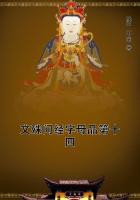When the glossy oval leaves, black dotted beneath, are freshly put forth in early summer - for the shrub is not strictly an evergreen, however late the old leaves may cling - it is said that stupid sheep and calves, which find them irresistibly attractive, stagger about from their poisonous effect just as they do after feeding on this shrub's relative the Lambkill (q.v.).In sandy soil from southern New England to Florida, rarely far inland, one finds the staggerbush in bloom from May to July.On the dry plains of Long Island, where it is common indeed, it appears a not unworthy relative of the FETTERBUSH(Pieris fioribunda), that exquisite little evergreen with quantities of small white urns drooping along its twigs, which nurserymen acquire from the mountains of our Southern States to adorn garden shrubbery at home and abroad.Mr.William Robinson, in his delightful book, "The English Flower Garden" (a book, by the way, that Rudyard Kipling reads as the Puritan read his Bible), counts this fetterbush among the "indispensables."Much taller than the preceding dwarfs is the COMMON PRIVETANDROMEDA found in swamps and low ground from New England to the Gulf and in the southwest (Xolisma ligustrina).Whoever has seen the privet almost universally grown in hedges is familiar with the general aspect of this much-branched shrub.Most farmers'
boys know the Andromeda's mock May-apple, a hollow, stringy growth of insect origin, which they are not likely to confuse with the pulpy, juicy apple found on the closely related azaleas (q.v.).Abundant terminal spike-like or branched clusters of white, globular, four or five parted flowers in close array, attract quantities of bees from the end of May to early July, notwithstanding each individual flower measures barely an eighth of an inch across.We have seen the fine hair-triggers which other members of this same family, the beautiful pink laurels (q.v.), have set to be sprung by an incoming visitor.Now this Andromeda, and similarly several of its immediate kin, have a quite different, but equally effective, method of throwing pollen on its friends who come to call.When one of the little banded bees clings, as he must, to the tiny flower scarce half his size, thrusting his tongue obliquely through the globe's narrow opening to reach the nectar, suddenly a shower of pollen is inhospitably thrown upon him from within.In probing between the ring of anthers (that are pressed against the style by the S-shaped curvature of the filaments so as to retain the pollen), he needs must displace some of them and release the vitalizing dust through the large terminal pores in the anther-sacs.Is he discouraged by such rough treatment? Not at all.Off he flies to another Andromeda blossom, and leaves some of the dust with which he is powdered on the sticky stigma that impedes his entrance, before precipitating a fresh shower as he sips another reward.
The straight column-like pistil, stigmatic on its tip only, allows the flower's own pollen to slide harmlessly down its sides.How exquisite are the most minute adjustments of floral mechanism! Is it possible for one to remain an agnostic after the evidences even the flowers show us of infinite wisdom and love?
Another denizen of swamps and low ground, next of kin to the trailing arbutus, is the LEATHERLEAF, or DWARF CASSANDRA(Chamaedaphne calyculata), a modest little shrub, its stiff, slender branches plentifully set with thick oblong leaves that grow gradually smaller the higher they go, and when young are densely covered with minute scurfy scales.Sometimes before the snow has melted in April, the leafy terminal shoots are hung with multitudes of little waxy-white, cylindric, typical heath flowers only about a quarter of an inch long, each nodding from a leaf axil, and the whole forming one-sided racemes.But as the shrub ranges from Newfoundland to Georgia, and westward to Illinois, British Columbia, and Alaska, some people find it blooming even in July.
Mythological names were evidently in high favor among the botanists who labeled the genuses comprising the heath family:
Phyllodoce, the sea-nymph; Cassiope, mother of Andromeda;Leucothoe; Andromeda herself; Pieris, a name sometimes applied to the Muses from their supposed abode at Pieria, Thessaly; and Cassandra, daughter of Priam, the prophetess who was shut up in a mad-house because she prophesied the ruin of Troy - these names are as familiar to the student of this group of shrubs today as they were to the devout Greeks in the brave days of old.
CREEPING WINTERGREEN; CHECKERBERRY; PARTRIDGE-BERRY; MOUNTAINTEA; GROUND TEA; DEER, BOX, or SPICE BERRY(Gaultheria procumbens) Heath family Flowers - White, small, usually solitary, nodding from a leaf axil.Corolla rounded bell-shape, 5-toothed; calyx 5-parted, persistent; 10 included stamens, their anther-sacs opening by a pore at the top.Stem: Creeping above or below ground, its branches 2 to 6 in.high.Leaves: Mostly clustered at top of branches; alternate, glossy, leathery, evergreen, much darker above than underneath, oval to oblong, very finely saw-edged; the entire plant aromatic.Fruit: Bright red, mealy, spicy, berry-like; ripe in October.
Preferred Habitat - Cool woods, especially under evergreens.
Flowering Season - June-September.
Distribution - Newfoundland to Georgia, westward to Michigan and Manitoba.















